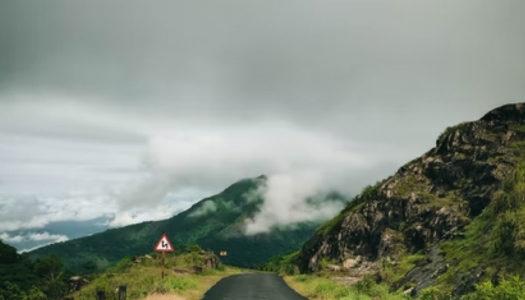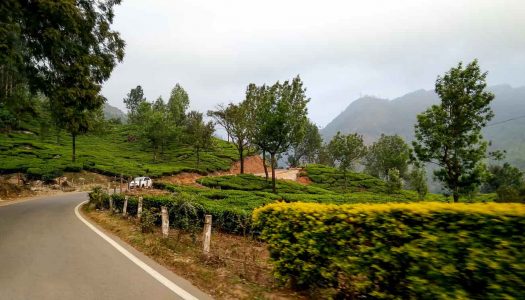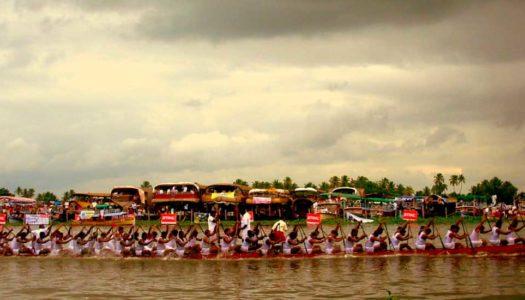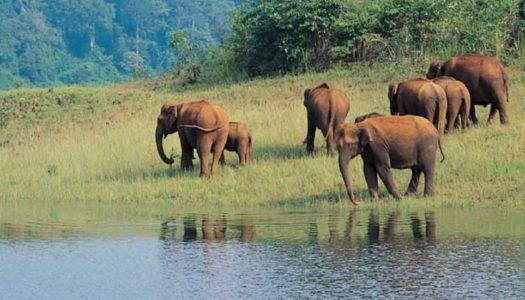Silent Valley National Park is one of the most fascinating forests stretching down south in the Western Ghats. The place is very popular for protecting endangered species like the Lion-Tailed Macaques and the Nilgiri Tahr. Are you planning to visit this dense, lush green rainforest soon? Here’s everything you need to know before you set out on the incredible journey.
About Silent Valley National Park in Kerala
The Silent Valley National Park is the last stretch of the tropical rainforests in the Western Ghats region that remain undisturbed to date. It boasts varied flora and fauna that include Lion-Tailed Macaques, Nilgiri Langurs and Nilgiri Tahrs among other species. The park represents the core of the Nilgiri Biosphere Reserves and shares its borders with Mannarkhad Taluk of Palakkad district in Kerala, Nilambur Taluk of Malappuram district in Kerala and Nilgiri district of Tamil Nadu. It is a part of the Nilgiri hills that extends both into Kerala and Tamil Nadu. The park has an area of 89.52 km2 with a buffer zone of 148 km2.

All admirers of the Nilgiri mountain ranges must explore these spectacular Munnar tourist places that are sure to leave you spellbound.
History and establishment
The first person to investigate the park area along with its watersheds was Robert Wight, a botanist from 1857. It is said that he named the place ‘Silent Valley’ because it was devoid of the noisy cicadas and remained more or less quiet. However, there’s a section that believes that the name had no significant backstory and was given to the park only to convert the local terms associated with the local Sairandhri region to English. The park is home to the Lion-Tailed Macaques whose scientific name is Macaca silenus. The name could have also been derived from the species name of this animal.
It was in 1914 that the area was declared a reserve forest. Between 1927 and 1976, several forestry operations were conducted here. In 1928, the authorities found that the location near the Kunti River, a waterbody that passes through the national park, was ideal for electricity generation. In 1958, a study was conducted and a project worth 17 crore rupees was proposed. They discussed the possibility of establishing a Hydropower plant in the region.
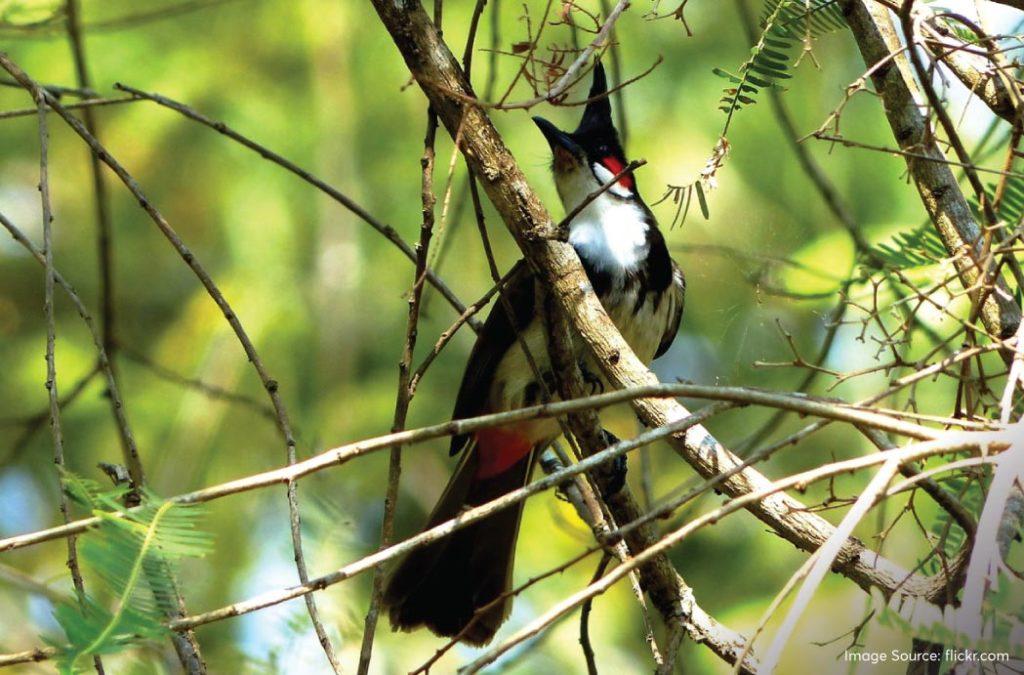
However, the locals were strictly against it. In the 1970s, the ‘Save Silent Valley’ movement became popular as the people protested against the felling of trees and the disturbance to the wildlife just to establish a Hydropower plant. The government had to bow its head to their efforts and eventually in 1980, the area was declared a national park and in 1985, it was officially inaugurated.
Another spectacular tourist destination in the Nilgiri mountains is Ooty. Know when is the best time to visit Ooty and set out on a vacation that is absolutely refreshing.
What to spot in Silent Valley National Park?
When you visit the Silent Valley National Park, you will find animals like herds of elephants, leopards, tigers and the Indian gaur relaxing or roaming around the evergreen forest. Apart from these, there are some unique endemic species of animals that are special and will be found in greater density at this national park.
1 – Lion Tailed Macaques
The Lion-Tailed Macaques have a black furry body with a distinct silver-white mane surrounding their face, something that resembles the name of a lion.
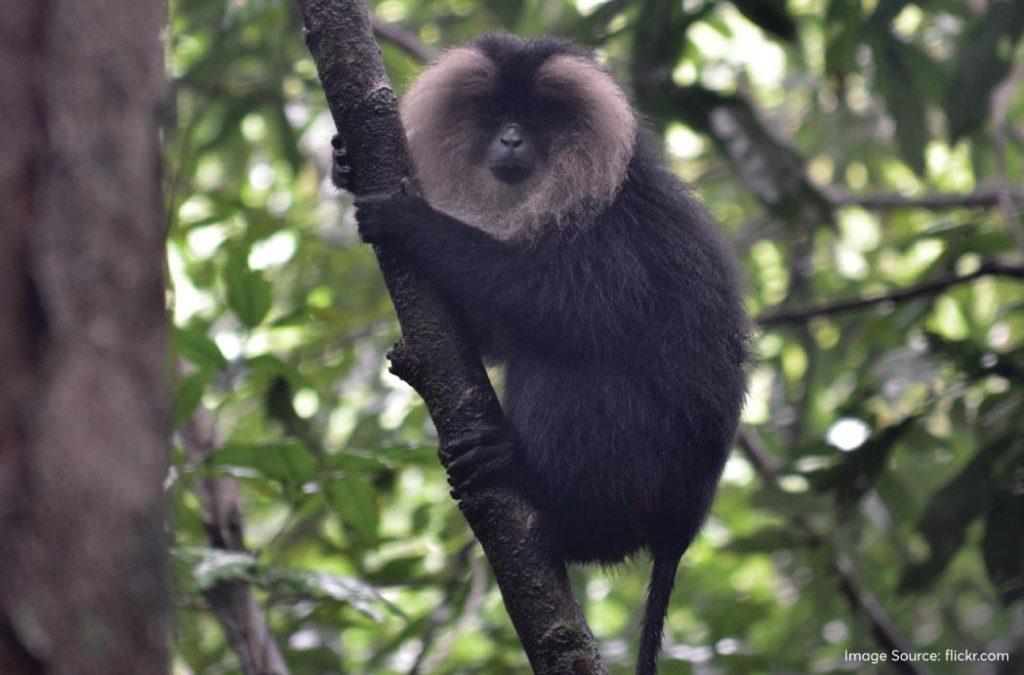
The Silent Valley National Park intends to preserve the endangered population of these primates. Lion-Tailed Macaques are arboreal and prefer to stay on trees. Though they are shy and reserved, they are also curious. So, you can easily spot them on the fruiting trees of the dense forest canopy.
2 – Nilgiri Tahr
Nilgiri Tahr is a unique mountain goat that is endemic to the Nilgiris and the Western Ghats in general. They have a stocky build, short and coarse fur along with curved horns.
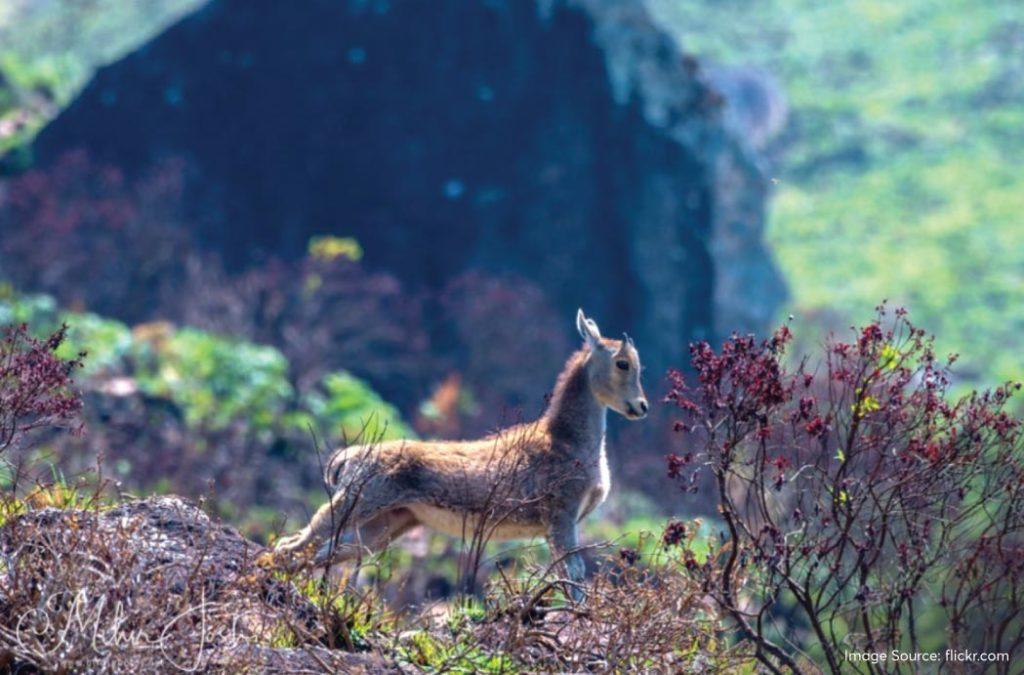
They usually travel in groups and are very social among their kind. They prefer to stay in the higher altitudes of the national park and you will find them near the rocky terrains and grasslands.
3 – Nilgiri Langur
The Nilgiri Langurs are black-furred monkeys with a golden-brown crown of fur on their heads. They usually travel in groups and are social animals, not just with their peers but with anyone who approaches them.
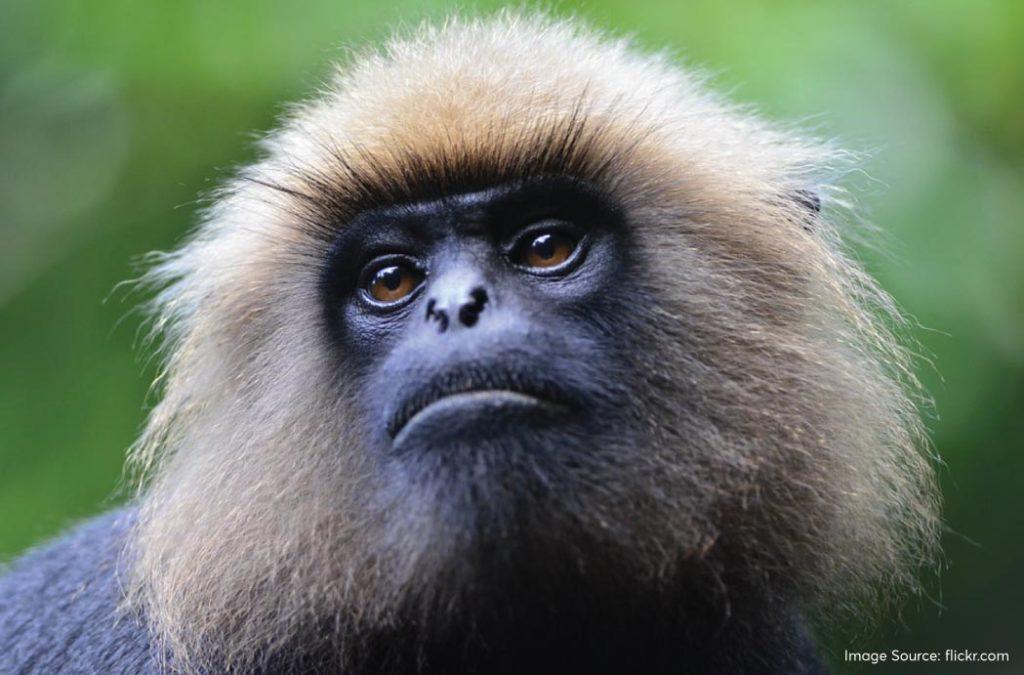
They can be quite mischievous though. They are very loud and their calls resonate across the national park. The Nilgiri Langurs are most active early mornings and during late afternoons.
4 – Malabar Giant Squirrel
The Malabar Giant Squirrel is an animal with a comparatively larger body than the normal squirrels and has a long, bushy tail. Its fur colour can range from deep purple and maroon to even orange and cream.
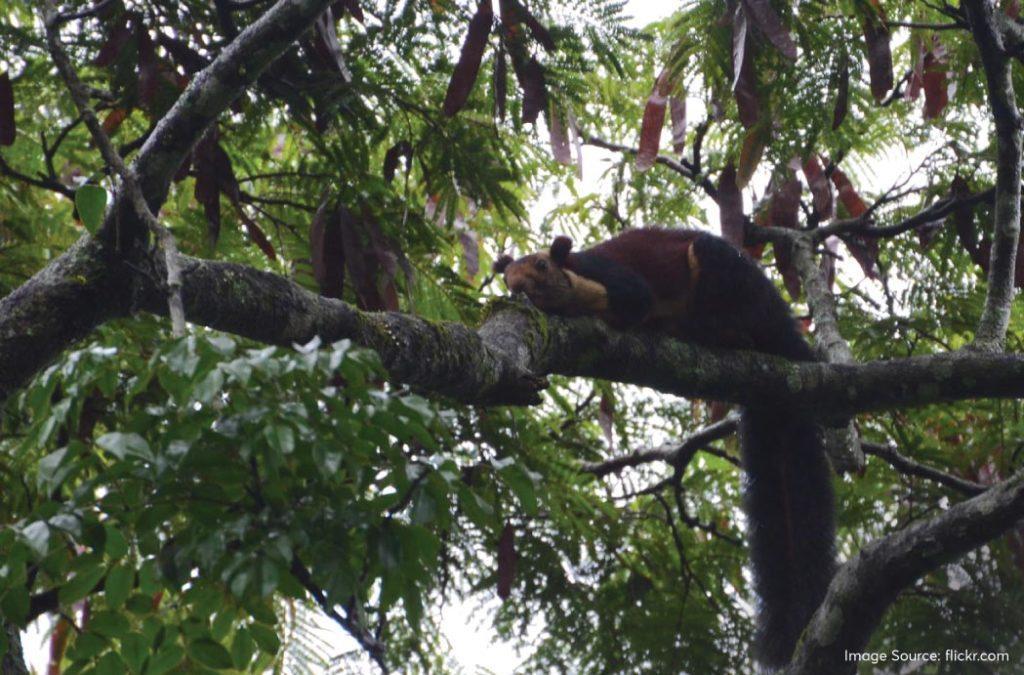
It is very fast and hard to spot unless it is relaxing on a tree or feeding on its food. However, they are more in number in the Silent Valley National Park, so it might be easy for you to see them if you look keenly.
5 – Torrent Toad
The Torrent Toad is an amphibian that you will find in the fast-flowing stream of the Kunthi River that flows through the evergreen forest of Silent Valley National Park.
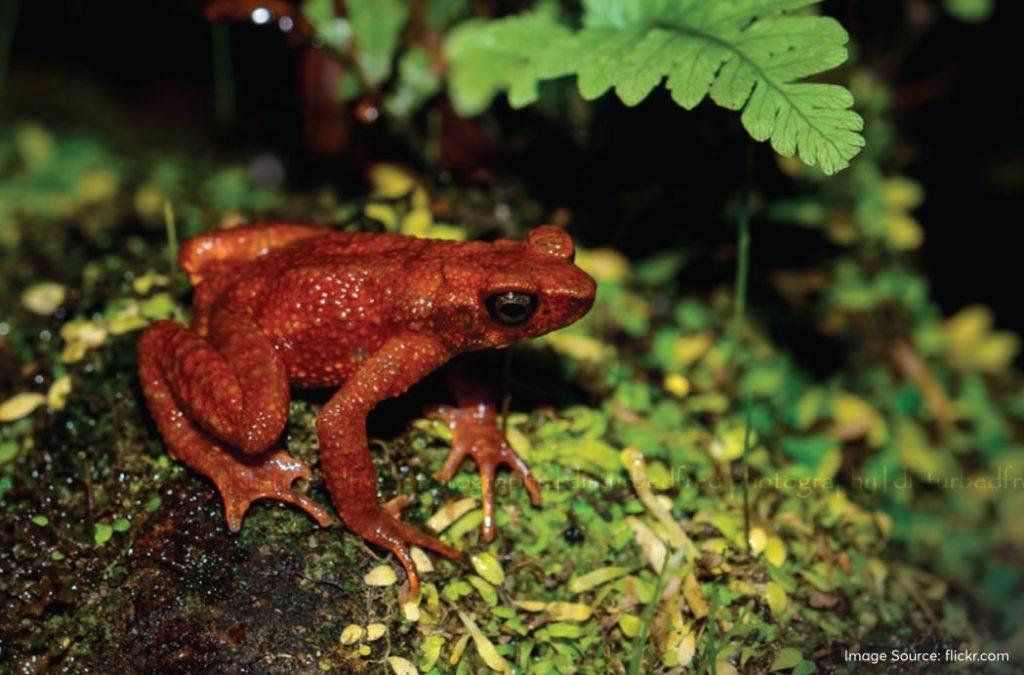
This toad clings to the surfaces of wet rocks in turbulent waters and this happens because of its toe pads. They are red in colour and prefer to stay in the shaded parts of the forest.
6 – Small Travancore Flying Squirrel
The first thing you need to notice to distinguish the flying squirrel from the giant squirrel is their size. The Small Travancore Flying Squirrel has a small, reddish brown body and the colour is a few shades lighter underneath. It is a nocturnal mammal and is very agile, gliding between trees with the help of a membrane called a patagium that stretches between its limbs.
Cultural and tribal heritage
Silent Valley National Park is not only a safe haven for the flora and fauna of the place but also offers shelter to the indigenous tribes of the region who use the forest resources for their livelihood. The Irula people are one of the major indigenous communities living around Silent Valley. They are traditionally hunter-gatherers and have a deep understanding of the forest, its plants, and wildlife. The Irulas have been closely linked with the land, relying on the forest for food, medicine, and shelter. The Kurumba tribe also stays within the vicinity of the Silent Valley National Park. They have very good knowledge in herbal medicine and know how to utilise the forest resources to their full potential. Kurumba tribals are splendid artists who can make handicrafts like beadwork, basket weaving and creative art that is inspired by their surroundings. They pass down their generation’s worth of knowledge to their next of kin to ensure that the priceless information doesn’t slip through the grooves of time.

The Irulas and Kurumba tribes believe in a sustainable lifestyle where they use the forest resources for their livelihood without exhausting them. It won’t be wrong to say that they have a very harmonious relationship with the land.
If you want to explore the tribal belt and familiarise yourself with the culture and heritage of the tribes in India, we suggest that you explore the hill stations in Andhra Pradesh that are home to unique tribes and show a glimpse of their sustainable lifestyle.
Entry, Guided safari and other activities
The Silent Valley National Park is open for tourists on all days except Friday. It remains open from 6:45 AM in the morning to 2:34 PM in the afternoon. However, wildlife safari rides start from 8:00 AM in the morning and run till 5:00 PM in the evening. No new bookings will be made post 2:30 PM.
The entry fee is INR 50 for Indians and an additional fee of INR 150 will be charged if you want to take a guide along. Also, you have to pay a fee for taking still cameras or video cameras into the national park. This will be INR 25 and INR 200 respectively.
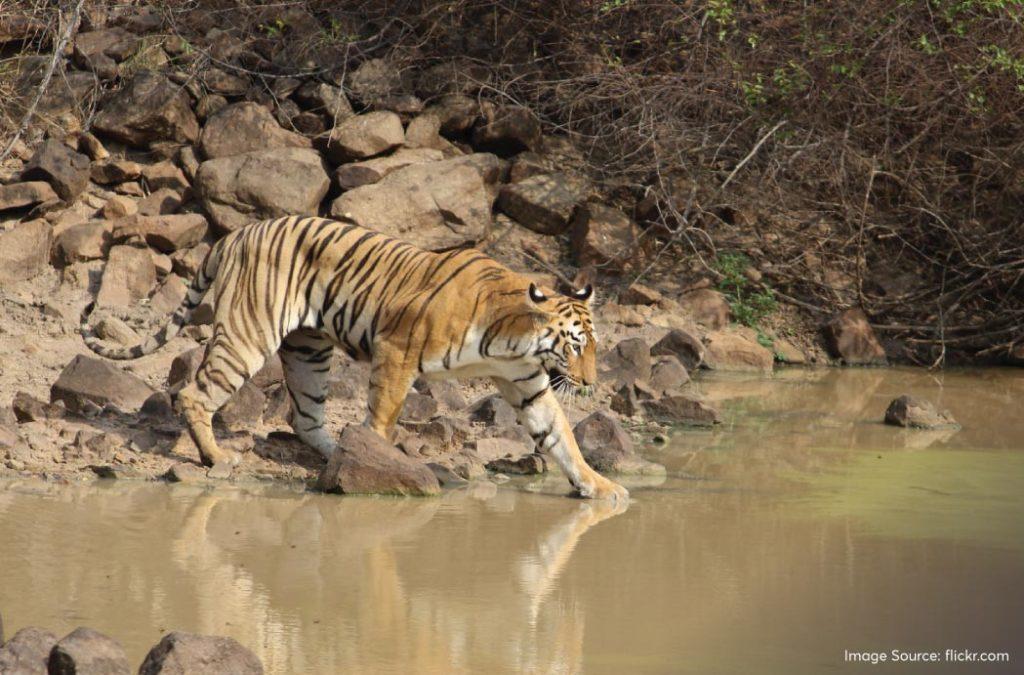
While you are on the safari ride, the guides will stop the vehicle near a watchtower. This place provides you with stunning views of the Nilgiri forest range. You can also spot birds perching on the trees. After you are done enjoying the stunning vistas from the watch tower, we suggest that you go on a short trek through the dense forest canopies to reach the Kunthi River. The peace that this spot offers is worth every minute of your trekking efforts.
Best time to visit Silent Valley National Park
Silent Valley National Park is a year-round destination and how the park appears to you mainly depends on the seasons. Nevertheless, it is absolutely breathtaking at all times.
The Summers in Silent Valley National Park start in April and extend till early June. This is when the atmosphere is warm in the morning and evening but scorching hot in the afternoons. Most of the animals come out of the dense forest cover to drink water from the river or from the mini pits that the forest rangers arrange for them.
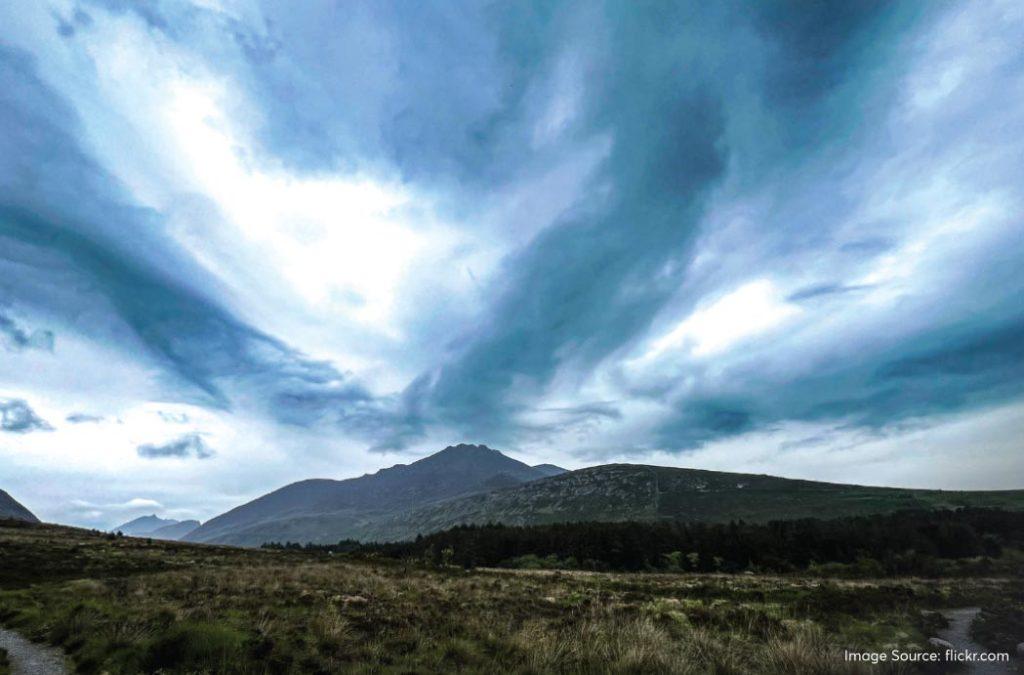
January and February are the winter months when the forest and the surrounding hills are covered by translucent mist. You will come across herds of elephants and the macaques at this time but for the smaller animals, you have to look more keenly.
The monsoons are a visual treat in Silent Valley National Park. Though the rains are very heavy and the safari routes become muddy and inaccessible, you can enjoy the greenery and vibrance of the forest. Most of the fauna do not come out at this time and prefer to stay wherever it is warmer and less wet. Trekkers who love a good challenge can set out to explore the place during the rainy season.
If you are someone who loves the monsoon season, then here are a few places to visit in the south during the monsoon season to make the best of the relaxing showers.
How to reach Silent Valley National Park?
By Air
Coimbatore International Airport is the nearest airport to Silent Valley National Park and is about 117 kms away from the entrance point of the rainforest. You will find multiple flights operating between Coimbatore and other major Indian cities like Hyderabad, Delhi, Mumbai, Kolkata, Chennai and Bengaluru.
By Rail
The Palakkad Railway Junction is the nearest rail route to the national park. You will have to travel 45 kms from the station to reach your destination. The railway junction receives trains from places like Delhi, Jaipur, Chennai, Mumbai and Hyderabad. You will easily find buses or private taxis that will take you from the station to Silent Valley National Park.
By Road
You can come to Silent Valley National Park through four routes, the ones that pass through Palakkad, Coimbatore, Thrissur and Kozhikode. The ones who are coming from Coimbatore and Thrissur should stay on NH544. From Palakkad, you will have to continue on SH39. The ones coming from Kozhikode must initially stay on NH766 and change to SH23 at Perinthalmanna and eventually SH30 near Mannarkkad.
Have you been to the Silent Valley National Park before? Let us know all about it in the comments section below.












